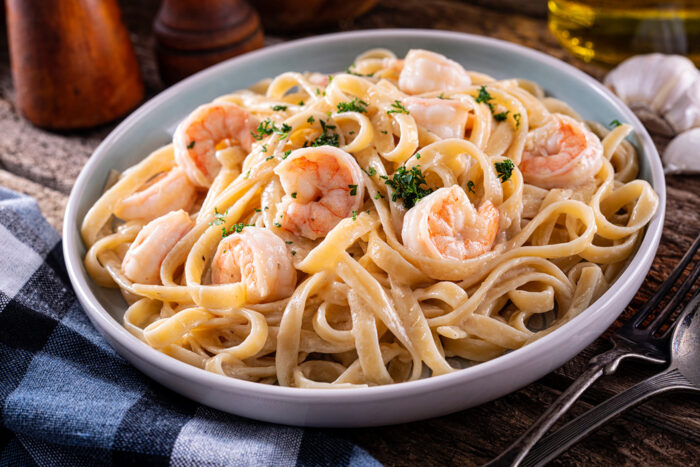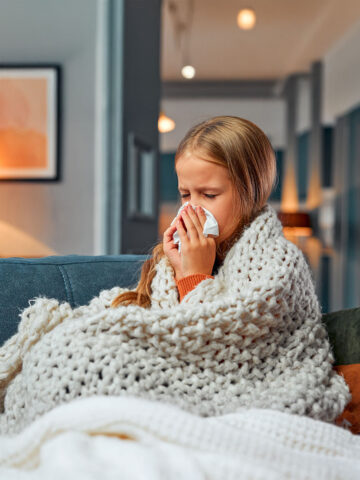By Kenneth Tran, CHOC dietetic intern and graduate student, California State University, Long Beach; Reviewed by Kristin Cheng, clinical dietitian at CHOC
When creating a balanced diet, protein is an important food group for your child to grow up healthy. Protein helps build muscles, maintains skin and hair health, and creates enzymes and hemoglobin to support bodily functions. Some common protein sources are chicken, beef, pork and turkey.
However, another great protein option that many forget about is seafood. Seafood consists of fish and shellfish, which are good sources of low-fat protein. It is also rich in several essential vitamins, minerals such as iron, iodine, choline, and omega-3 and six fatty acids. These nutrients all help to support a child’s brain development, spinal cord development and immune system. Fish is also a good source of other nutrients like vitamin B12, vitamin D and selenium.
Some good choices of seafood include salmon, tuna, trout, herring, shrimp, cod, catfish, crab, scallops, pollock, tilapia, whitefish, trout, perch, flounder, sole, sardine, anchovies, crawfish, clams, oysters and lobster.
How much fish should kids eat?
A child’s recommended serving of seafood is twice a week and the portions are smaller than an adult’s portion size. On average, servings for kids should be:
- 1 ounce for kids 1 to 3 years
- 2 ounces for kids 4 to 7 years
- 3 ounces for kids 8 to 10 years
- 4 ounces for kids 11 to 18 years
Potential health benefits of seafood for kids
Studies in adults report that consumption of seafood can provide omega-3 long-chain polyunsaturated fatty acids. These fatty acids are associated with controlling control lupus, eczema, and rheumatoid arthritis. They may also help prevent heart disease, stroke, cancer and other conditions. These fats appear to help the heart beat at a steady pace and not veer into a dangerous or potentially-fatal erratic rhythm.
Get more expert health advice delivered to your inbox monthly by subscribing to the KidsHealth newsletter here.
Potential health concerns of seafood consumption for kids
There are concerns about pollutants in seafood, especially methylmercury. This is one of the primary reasons that parents avoid feeding their child seafood and expectant mothers avoid seafood during their pregnancy.
However, moderate amounts of seafood are a good source of protein with minimal traces of pollutants. The benefits of omega-3 fats outweigh the risks of potential pollutants. The easiest way to avoid concerns about contaminants is to eat a variety of fish and other seafood.
Some choices to avoid due to higher levels in mercury include tilefish, shark, swordfish, king mackerel, orange roughy, marlin, bigeye and bluefin tuna
Family-friendly seafood recipe

Cream-free shrimp alfredo
Ingredients:
12 ounces fettuccine
Kosher salt and freshly ground pepper
¾ cup thawed mixed vegetables (carrots, peas, corn)
1 pound medium shrimp (26 to 30), peeled and deveined
4 tablespoons unsalted butter
1 large egg yolk
3 ounces Parmigiano-Reggiano, grated (¾ cup), plus more for serving
Instructions:
Cook pasta in a large pot of generously salted boiling water until al dente, about 2 minutes less than package instructions. Add mixed vegetables during the last 15 seconds of cooking. Drain, reserving 2 1/2 cups pasta water and covering to keep warm.
Meanwhile, season shrimp with salt and pepper. Melt 2 tablespoons butter in a large straight-sided skillet over medium-high heat. Add shrimp in a single layer and cook, flipping once, until golden brown in places and just cooked through, 3 to 4 minutes total. Transfer to a plate.
In a bowl, slowly whisk 3/4 cup pasta water into egg yolk. Bring another 3/4 cup pasta water to a simmer in skillet over medium-high heat. Reduce heat to low until water is steaming hot but no longer simmering; stir in remaining 2 tablespoons butter until melted. Whisk in cheese, a little at a time, allowing each addition to dissolve before adding more, until smooth. Slowly whisk in yolk mixture.
Add pasta and peas; increase heat to medium and cook, tossing a few times, until sauce thickens just enough to evenly coat pasta. Remove from heat; toss in shrimp and any accumulated juices. (If sauce has thickened too much, add more pasta water, a few tablespoons at a time.) Serve with more cheese and pepper.
Adapted from Martha Stewart’s Cream-Free Shrimp Alfredo recipe.
Get more expert health advice delivered to your inbox monthly by subscribing to the KidsHealth newsletter here.
Learn more about CHOC’s Clinical Nutrition Program
At CHOC, we specialize in providing a full continuum of pediatric nutrition services, including inpatient and outpatient services, depending on our patients’ needs.





